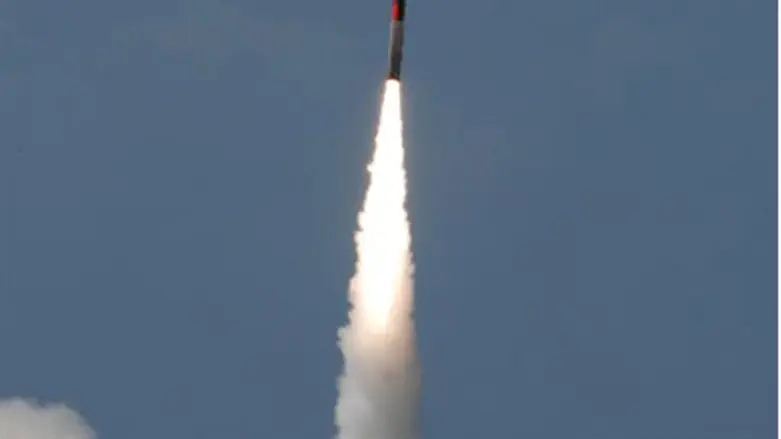
Israel Aerospace Industries (IAI) announced on Monday that it will soon hold the first full-scale test fire for the Arrow-3 missile, the Israel Defense website reported.
According to the report, the test-fire will see the Arrow launched at a target simulating an advanced long-range ballistic missile, similar to advanced projectiles whose interception is more complex.
Arrow-3 is meant to intercept long-range missiles, even those carrying unconventional warheads. Today, two Arrow-2 missile batteries are protecting Israel against ballistic missiles.
A defense official said on Sunday that Israel is racing against an attack by Iran and Syria and is upgrading its Arrow missile shield in the wake of a possible a chemical weapon attack from Syria.
The new "Block 4" generation of guided interceptor rockets, radars and technologies for synchronizing Arrow with U.S. systems was being installed in deployed Israeli batteries, a process that would take several weeks, the official told Reuters.
Arrow-3 batteries are meant to be deployed alongside Arrow-2 batteries, and each will be employed according to a potential threat against Israel.
Besides the threat of a nuclear threat for Iran in the next year or two, Israel is now preparing for a possible chemical warfare attack from Syria, where the civil war could spur Syrian President Bashar Assad to turn his missiles on Israel. The same situation could arise if Hizbullah, which is thought to have accessed part of the chemical arsenal, decides to attack Israel from Lebanon.
In February, the Ministry of Defense conducted a successful test on the “Arrow” anti-missile system. The experiment tested the system’s enhanced capabilities of dealing with ballistic missiles such as the Scud and the Iranian Shihab.
